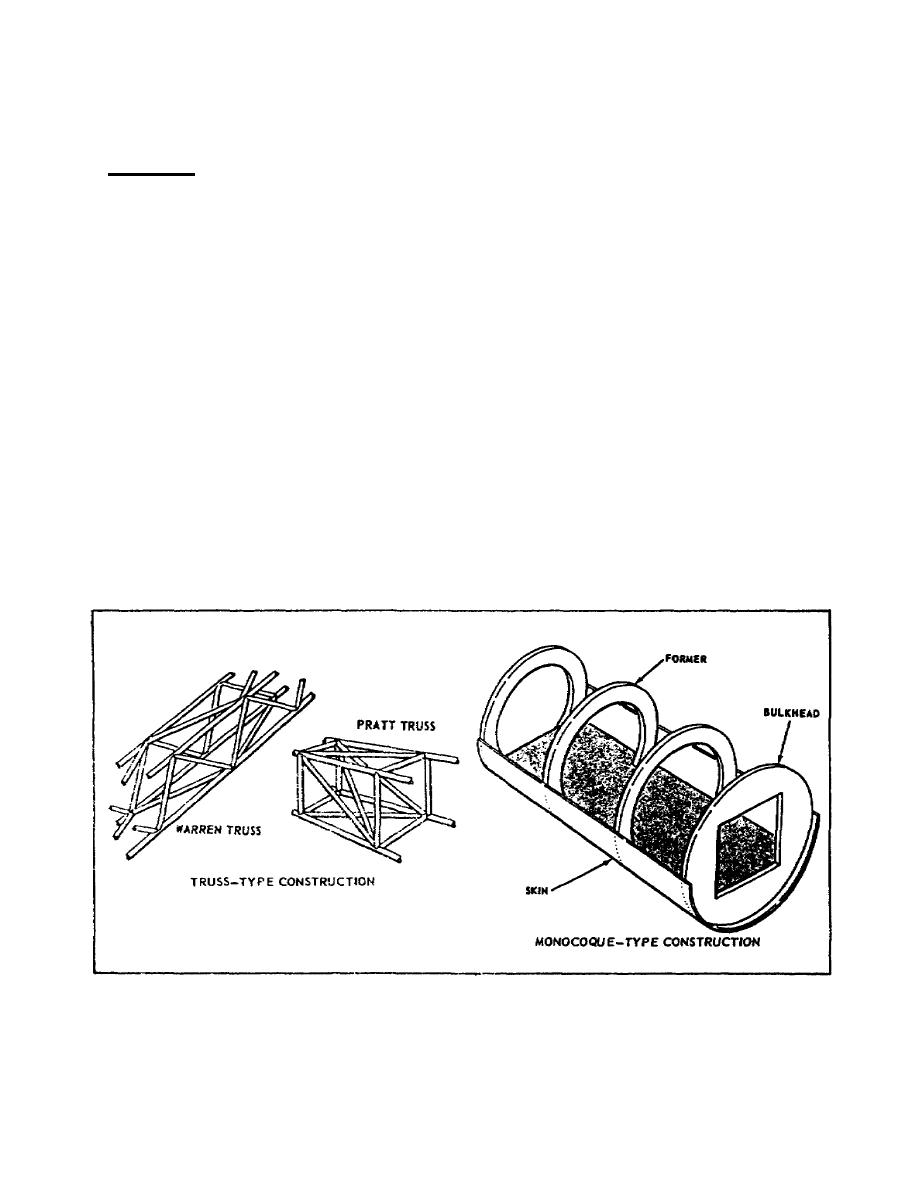
reinforced shell constructions for the fuselage; the structural
members used; construction for the nacelle; monospar, multispar, and
box-beam wing constructions; and empennage constructions.
Fuselage. The main structural unit of an airplane is the fuselage.
Other structural units are directly or indirectly attached to it. In
outline and general design, the fuselage of one airplane is much the
same as any other.
Designs vary principally in the size and
arrangement of the different compartments. On military single-engine
airplanes, the fuselage houses the powerplant, personnel, and cargo.
The basic fuselage constructions are truss and monocoque. The truss
construction, a rigid framework of beams, struts, and bars, shown in
Figure 1-3, resists deformation by applied loads.
Many smaller
general aviation aircraft and a number of older military aircraft
have used truss construction.
A monocoque fuselage, shown in Figure 1-3, is like a shell in that
the skin bears the primary stresses in spite of the formers, frame
assemblies, and bulkheads that give the fuselage its shape.
The
construction strength required depends upon the power used, speed,
maneuverability, and design.
The full monocoque construction is
seldom used because the skin is the principal part of the airframe.
The big problem in monocoque construction is maintaining strength and
keeping weight down. To overcome this problem, the semimonocoque and
reinforced shells were developed.
These shells are used in the
majority of present-day military aircraft.
Figure 1-3.
Fuselage Construction.
4
AL0992



 Previous Page
Previous Page
